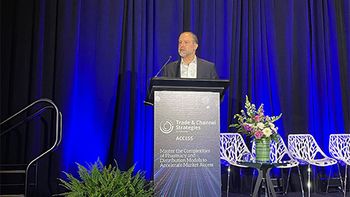
LogiPharma USA 2024: Confronting Conflicting Priorities Between Supply Chain Partners
Lucy Alexander, capabilities lead, global supply chain and strategy, AstraZeneca, discusses how to handle opposing concerns between supply chain teams and offers communication solutions.
At this year’s LogiPharma USA conference in Boston, a panel titled “Conveying Key Goals and Strategies Across the Value Chain,” discussed how collaborating with distributors and other logistical partners takes consistent and clear communication across the vast systems and networks that the pharmaceutical industry operates in. In an interview with Pharma Commerce, Lucy Alexander, capabilities lead, global supply chain and strategy, AstraZeneca, and a participant of the panel, offered a synopsis of the panel and spoke of challenges in communication across the value chain.
PC: How do you handle conflicting priorities between supply chain partners, and what communication strategies help resolve these conflicts?
Alexander: That happens a lot. Having the transparent conversations about what's most important to us at the start is super helpful. In some cases, some companies or even business units will be really focused on managing their headcount, reducing costs, or implementing digital systems. Maybe they're going through major transformation programs, and so those are priorities for them. When you come in with something different, it may be difficult for them to sort of figure out how to manage all that together. It can be really tricky. I think having those conversations on a regular basis, so going into it, you understand what your priorities are.
We encounter this a lot with our commercial colleagues. They are looking to increase access to our medicines and increase the number of patients they go to. That’s fantastic, but then that gets us into things such as having smaller shipments than were used to. Maybe they have to go longer distances. It comes down to understanding what people are trying to achieve. Then, when you have those conflicts, and explain what you have compared to what they have, that’s where you begin to see tension. How can we look to achieve both? In some cases, maybe it turns out people have some other levers they can pull outside of your specific relationship or conversation, and that can help surface some of those. So, it’s not just X or Y, but it might be x plus y plus z as an example, or maybe we can achieve 80% of it. It’s not an all or nothing proposition.
Full Interview Summary: The panel on conveying key goals and strategies across the supply chain emphasized the importance of alignment throughout the supply ecosystem. Misaligned goals can lead to confusion, with teams misunderstanding both the "what" and the "why" of tasks. Ensuring clear communication from corporate strategy down to individual objectives is essential for successful execution, not only within the organization but also across partnerships. Effective collaboration with partners is crucial, particularly in aligning priorities and understanding the drivers behind strategic decisions. Regular and transparent communication helps partners proactively adjust when business dynamics change.
In addressing supply chain conflicts, the panel noted the frequent occurrence of conflicting priorities. Organizations may have diverse focuses, such as cost reduction or digital transformation, which can create tension when balancing these against other objectives. The key to resolving these conflicts is transparency, ongoing communication, and a mutual understanding of each other's goals. In some cases, compromises can be made, or creative solutions may emerge to meet a majority of the objectives.
The speaker also shared an example of effective communication in supply chain management, where understanding operational constraints led to more collaborative problem-solving. This approach underscored the speaker’s belief in the role of supply chain management as a mediator between different organizational needs.
As the supply chain landscape evolves, skills like storytelling, negotiation, and trust-building will become increasingly important. Simplifying complex situations through storytelling can help align stakeholders, while negotiation ensures win-win solutions. Finally, building trust, especially in an increasingly digital world, remains a critical component of successful partnerships.
Newsletter
Stay ahead in the life sciences industry with Pharmaceutical Commerce, the latest news, trends, and strategies in drug distribution, commercialization, and market access.





